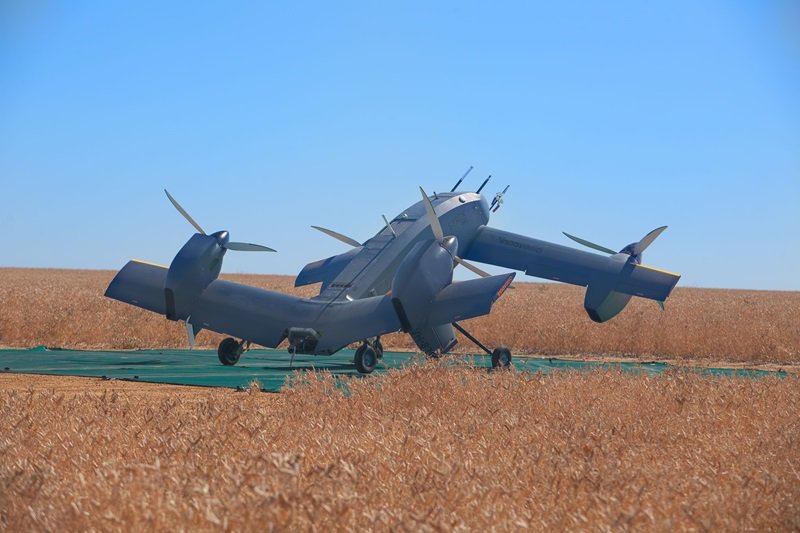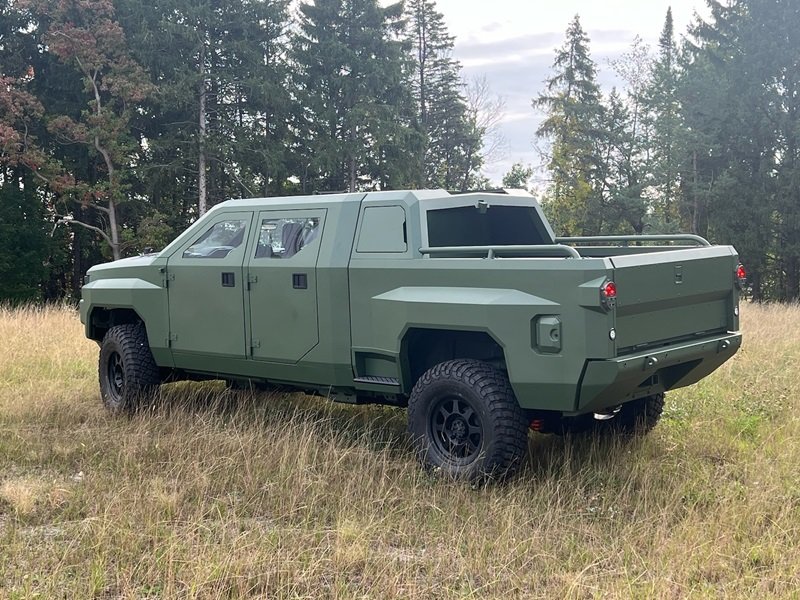Modern militaries crawl towards electrification of the battlefield
The NGTV-H from GM Defense (Photo: GM Defense)
Major players in the defence industrial world are moving towards a tipping point on the electrification of their technology.
The military product subsidiary of General Motors, GM Defense for instance, is already working on EV hybrid versions of its Next Generation Tactical Vehicle-Hybrid (NGTV-H) model, a diesel-powered, electric light reconnaissance vehicle, which it showcased in October 2024 at the Association of the United States Army (AUSA) annual event.
But the industry is also aware of several power production barriers which need to be overcome before that tipping point can be reached.
Related Articles
DSEI 2023: DSD sees bright electric defence vehicle future
Will future ground fleets finally embrace hybrid electric solutions?
AUSA 2024: Mack Defense shows latest MD6 electric vehicle
Adding electric options to the defence menu
In the meantime though, modern warfare is evolving, with many lighter vehicle designs and other equipment becoming increasingly reliant on more electrical power.
As militaries modernise, defence operations are increasingly dependent on advanced electronics, surveillance systems, electric mobility and technologies, all requiring reliable portable power solutions that let them charge in the field.
Even combat systems such as smart rifles, laser targeting mechanisms and counter-drone jammers, or even wearable soldier technology like exoskeletons and smart armour, can use battery-powered equipment across various domains.
Meanwhile, traditional power sources like diesel generators are heavy, noisy, fuel-dependent and logistically complex.
Subject to current technology limitations, Western militaries such as the UK and the US (and their defence contractors) have been exploring the electrification of the battlefield, with field tests ongoing in a number of areas.
Hybrid vehicles, crewed and uncrewed
The GM Defense NGTV-H, for instance, comes in two-seater, four-seater and six-seater variants, and supports the capability to embrace a variety of military roles, from counter-unmanned aerial systems (CUAS), to command and control and casualty evacuations.
It boasts a reduced logistics tail for fuel, batteries and vehicle parts but can still run on the US military’s pre-existing JP8 fuel infrastructure, making it a flexible choice for units out in the field.
John Johnson, VP of the government solutions and strategy division at GM Defense, said: “NGTV-H fundamentally changes the discussion around modern mobility through the tactical benefits delivered by its propulsion system, including its ability to address the power gap in the formation.
“It represents billions of dollars of investments [General Motors] has made in R&D and innovation to enhance warfighter capability.”
Electric UAVs
Ground vehicles are not the only form of military equipment moving away from a pure reliance on fossil fuels to power their engines. Hybrid UAV designs are also being explored by defence firms, with BAE’s STRIX UAV programme currently undergoing field testing.
The experimental design is intended to function in littoral and maritime roles, as well as operating in land scenarios including as an attack helicopter’s support unit.

James Garth, programme manager for the STRIX design and testing process at BAE Systems Australia, said the UAV had gone from concept sketch to achieving autonomous vertical take-off-and-landing flight within two years.
The latest electric STRIX UAV prototype model is already a full-scale flying air vehicle, following a successful testing campaign conducted in Q4 2024, which included full-power tests, ground tests, take off and recovery, and sustained hover testing.
BAE Systems Australia is seeking customer investment and opportunities for partnering and co-development as it progresses STRIX development toward further ground and flight testing. Garth believes its simple motor design and hybrid fuel design will make it a commercial success with defence clients.
“The STRIX draws continuous power from its turbogenerator, coupled with battery boost for peak power demands during the mission,” said Garth. “This provides weight and cost savings compared with [UAVs] that use separate lift systems for hover and cruise.”
In terms of flight length, Garth explained: “The STRIX’s hybrid propulsion design allows its batteries to be recharged in the field using its on board turbogenerator. That provides significant flexibility when operating in austere locations. STRIX can also function as a mobile generator to recharge other electric systems in the field. It has a flex fuel capability, including JET-A1, diesel, AVGAS, ULP and biofuels.”
Portable power
Electric vehicle portable charging systems like Solus Power’s Kratos technology are also beginning to filter down to defence industry customers after years of design and testing.
Electrification offers militaries obvious logistical and tactical advantages, such as silent running in EVs and improved silent watch capability.
Military vehicles and facilities that have been upgraded with modern EV technology and infrastructure will benefit from reduced noise and thermal signatures, increasing their survivability during conflict periods.
Specialist battery innovation company Solus Power is working with defence firm QinetiQ to develop the Kratos off-grid energy storage and charging system for hybrid EVs in the field.
Solus Power founder and CEO Stas Leonidou said that Kratos was currently in its testing and development stage as the company awaited field trials of the new technology.
“The battery solution is aimed at providing power to a range of defence equipment, including auxiliary power to hybrid vehicles,” said Leonidou.
“Our ruggedised portable battery will be required to withstand the same abuse and harsh treatment a typical Jerry can is subjected to. We’re talking knocks, drops, shocks, dirt, debris, water, mud. The difference with our technology is there’s a lithium-ion, cylindrical cell battery inside, which needs to be protected,” he added.
A single Kratos unit has a capacity of 4kWh, making it suited for powering equipment and smaller electrical items, but it also capable of supporting electric bikes and motorcycles.
The battery is modular, meaning it can scale in energy to meet the users’ needs. The units also connect together in series or parallel to increase output, making them a viable power solution for hybrids and electric vehicles.
Solus Power and QinetiQ expect to finish tests on the technology later this year.
The fuel of tomorrow’s military
Despite the fact that every litre of conventional fuel sent to an army’s Forward Operating Base typically requires another seven litres to get it to there, the widespread adoption of electric vehicles and their associated infrastructure is not a reality today.

The idea of an electric-powered tank, for example, is simply not viable with today’s cell chemistry and energy density limits.
The direction of travel in the defence sector is clear, however, with the US and the UK both invested in plans to electrify the battlefield.
Modern lighter hybrid vehicle designs are likely to be replaced in the coming years by fully electric vehicles that have switched to the use of fuel cells, charging stations or solar solutions to keep them working in the field or on the base.
The military ground, air and maritime fleets of the future appear set to be quieter and cleaner than their 20th century fossil fuel predecessors, as the clean energy revolution slowly rolls out across Western armed forces.
Related Equipment in Defence Insight
More from Land Warfare
-
![Australia invests $1.4 billion in additional AMRAAM buy]()
Australia invests $1.4 billion in additional AMRAAM buy
Some of the missiles ordered can be used on the F/A-18F Super Hornet, EA-18G Growler and the F35-A Lightning.
-
![Hungary’s Gamma Technical expands vehicle range]()
Hungary’s Gamma Technical expands vehicle range
The company’s new variants of 4×6 and 6×6 vehicles are designed to be modular for a greater variety of missions and also flexibility at a subsystem level, for example transmission and engine.
-
![US Army seeks nearly $900 million to accelerate development and acquisition of CUAS capabilities]()
US Army seeks nearly $900 million to accelerate development and acquisition of CUAS capabilities
The branch plans to speed up the building and procurement of kinetic and non-kinetic systems for fixed, semi-fixed and on-the-move operations.
-
![Large 10×10 vehicles go in search of a role]()
Large 10×10 vehicles go in search of a role
Wheeled vehicles ranging in size from 4×4 to 8×8 provide high-speed at a good level of mobility compared to tracked. However, tracked can be larger and have a higher level of mobility in marginal terrain with a smaller turning circle. What are the possibilities for a 10×10?






















